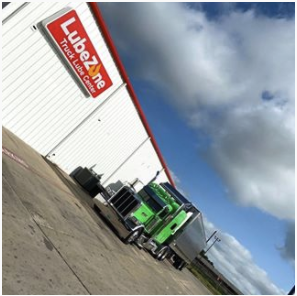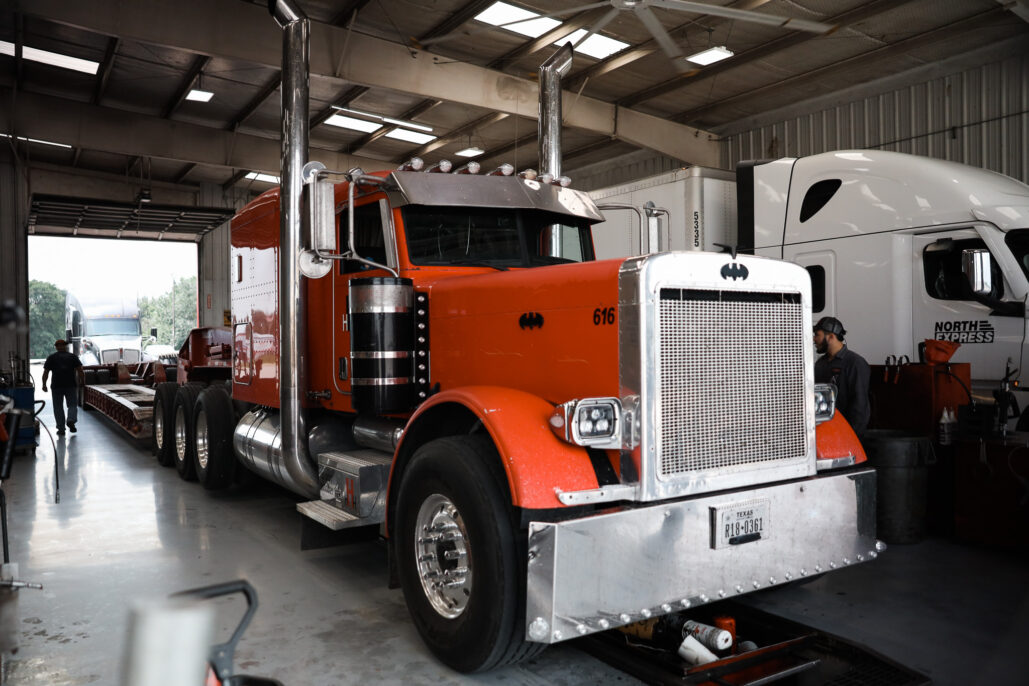
Warning Signs of Oil Pressure Problems in Semi-Trucks
April 16, 2025LubeZone’s Guide To Getting Your Commercial Driver’s License (CDL)
Getting a Commercial Driver’s License (CDL) is an important step in a person’s career and is the key to becoming a commercial driver. Not only does having a CDL allow you to operate large vehicles such as semi-trucks, but it also ensures that you are qualified and knowledgeable of the laws and regulations that come with operating these vehicles. Although the process of obtaining your CDL may seem daunting, with the right knowledge and guidance, it is much easier than it appears.
Take a look at this step-by-step guide to getting your CDL, and before you know it, you’ll be on the road behind the wheel of a big rig!
Understanding CDL Types
In order to get your CDL, you must first determine which type of license you need. Depending on the state, there are three main types – Class A, Class B, or Class C licenses. Keep in mind that there are a number of specific endorsements and restrictions that can be added to each license, so it’s important to know exactly what type and class of license you need.
Class A CDL
Class A licenses are required for operating vehicles with a Gross Vehicle Weight Rating (GVWR) of more than 26,000 pounds with an attached trailer weighing more than 10,000 pounds. This type of license covers semi-trucks, tankers, livestock carriers, and most other truck/trailer combinations, as well as the majority of Class B vehicles.
Class B CDL
If you plan on driving a vehicle that is over 26,000 pounds but does not have an attached trailer, you will need to obtain a Class B license. The most common vehicles that someone would get a Class B CDL for include motor homes, box trucks, and dump trucks, as well as large passenger buses such as tour buses. A Class B CDL also permits drivers to have a detached cargo vehicle towed behind, common for people who drive an RV and want to tow their passenger car behind the vehicle.
Class C CDL
Lastly, a Class C CDL is necessary for those who plan on operating vehicles designed to transport 16 passengers but fewer than 24, including the driver. This type of license covers school buses, shuttles, and other motor vehicles that are not classified as either Class A or B. Commercial drivers do not often choose to get a Class C CDL, since a Class A covers both B and C vehicles (but, again, it does not come with the necessary endorsements).
Be Sure You Are Old Enough
The first and most important step to getting your CDL is making sure that you are of legal age to obtain it. There are some states that allow drivers to carry a CDL after their 18th birthday. However, many trucking companies require that their drivers are aged 21 or older, so even if you are old enough to get a CDL you may still have to wait until you are 21 before you can drive commercially. The FMCSA requires that anyone driving a CMV must be over the age of 21 to drive across state lines, which is why many companies won’t hire until this age.
Apply for A Commercial Learner’s Permit (CLP)
Before you can take a road test, and in many cases, before you can sign up for trucking school, you must have a Commercial Learner’s Permit (CLP). To obtain one, you will need to fill out an application with your local licensing department. You will also need to bring proof of identity and residency as well as any other documents that may be required by your state.
If you aren’t sure about whether or not you should take the test for a CLP before enrolling in a school, contact the CDL school you are planning to attend. Some may offer support before even taking your permit test or may help you get your permit once the course begins. Of course, this is course-specific, so plan on getting your CLP on your own, but check with the course directors about whether or not this is a necessary step.
Find a CDL School
Once you have your CLP, you can begin in a truck driver training school. These schools are typically offered by many community colleges or independent organizations and cover all the necessary topics to become knowledgeable in operating commercial vehicles. Make sure that the school you choose is state-approved, as this will ensure that you receive the best education possible.
CDL schools are typically 6-week programs that include both knowledge and hands-on education. Many people have never even been in the cab of a semi-truck before attending a CDL program, so don’t feel bad if you don’t know the difference between a clutch and a brake pedal. The schools will teach you everything you need to know so that by the end of the program, you are ready for your road test.
Pass the Knowledge Test
Once you have completed your CDL course, the next step is to take and pass the required knowledge test. The written test covers everything from traffic laws and regulations to proper techniques for driving large vehicles. It’s important to prepare for the test by studying in advance – many states offer practice tests that can help you brush up on your knowledge.
You will have plenty of time in your CDL program to practice and perfect your driving skills, but the knowledge test must be taken before you can move on to your road test.
Get Your Paperwork In Order
The last step before taking your road test is to make sure all of your paperwork is in order. If necessary, this includes proof of identity, residency documents, and medical certificates. These documents are different from state to state, so be sure to check with the licensing department in your area for a full list of requirements.
Once you have all the necessary paperwork, you can then take your road test and be on your way to obtaining a CDL.
Pass The Road Test
After you have completed the written test, you must then pass a road test in order to receive your CDL.
During a Commercial Driver’s License (CDL) road test, the examiner will evaluate your driving skills and knowledge of the laws and regulations that come with operating large commercial vehicles. Before taking the road test, it is important to practice driving a large vehicle beforehand in order to ensure that you are well prepared for the test. Luckily, you will have spent plenty of time behind the wheel during your CDL program, so you should feel confident that you can pass the road test.
The road test typically includes basic maneuvers such as parallel parking and three-point turns, along with a thorough evaluation of your skills behind the wheel. Make sure that you know the laws and regulations that come with operating a commercial vehicle, as these will be tested during the exam.
Pass the DOT Medical Exam
In order to receive your CDL, you must pass a DOT medical exam. This exam is used to determine if you are fit to operate a commercial vehicle and assess any physical or mental limitations that could prevent you from doing so safely.
The examiner will check your vision, hearing, range of motion, heart rate and blood pressure in order to determine if you are fit to drive. If you have any physical or mental impairments that could hinder your ability to safely operate a commercial vehicle, the examiner may refer you to a specialist for further evaluation.
Once you have passed the DOT medical exam, you can then proceed with getting your CDL.
Receive Your CDL Card
Once you have passed the knowledge and road tests, all that is left to do is receive your CDL card! The issuing department will mail or hand deliver your CDL card, and then you will officially be ready to hit the open road.
After You Get Your CDL
There are a number of other steps you may need to keep in mind after you have received your CDL, such as internal policies for the companies you are applying to drive for. Many of these policies include passing a drug test and background check, which may be required before you are able to start driving.
You may also need to get additional certifications or endorsements if you plan to haul hazmat materials or drive certain types of vehicles. Make sure to do your research and stay up to date on any new laws or regulations that may apply to you as a CDL driver, and make sure you understand what will be required of you for specific jobs in the trucking industry.
It is also important to remember that a CDL is not just something you can receive and forget about – it needs to be renewed every couple of years and kept up-to-date with any changes in laws or regulations.
Are You Ready To Hit the Road With a CDL?
Remember, getting a CDL is no easy task and requires dedication to stay up to date on the latest regulations. However, having a CDL opens up a world of new opportunities for you and can help you pursue exciting career paths in transportation and logistics. So put in the work now, and get ready for your new journey. Good luck!

LubeZone is the fastest growing dedicated semi-truck service in the United States with locations in Texas, California, Oklahoma, North Carolina and Georgia. Our preventative maintenance solutions are designed to get the professional driver back on the road FAST.



